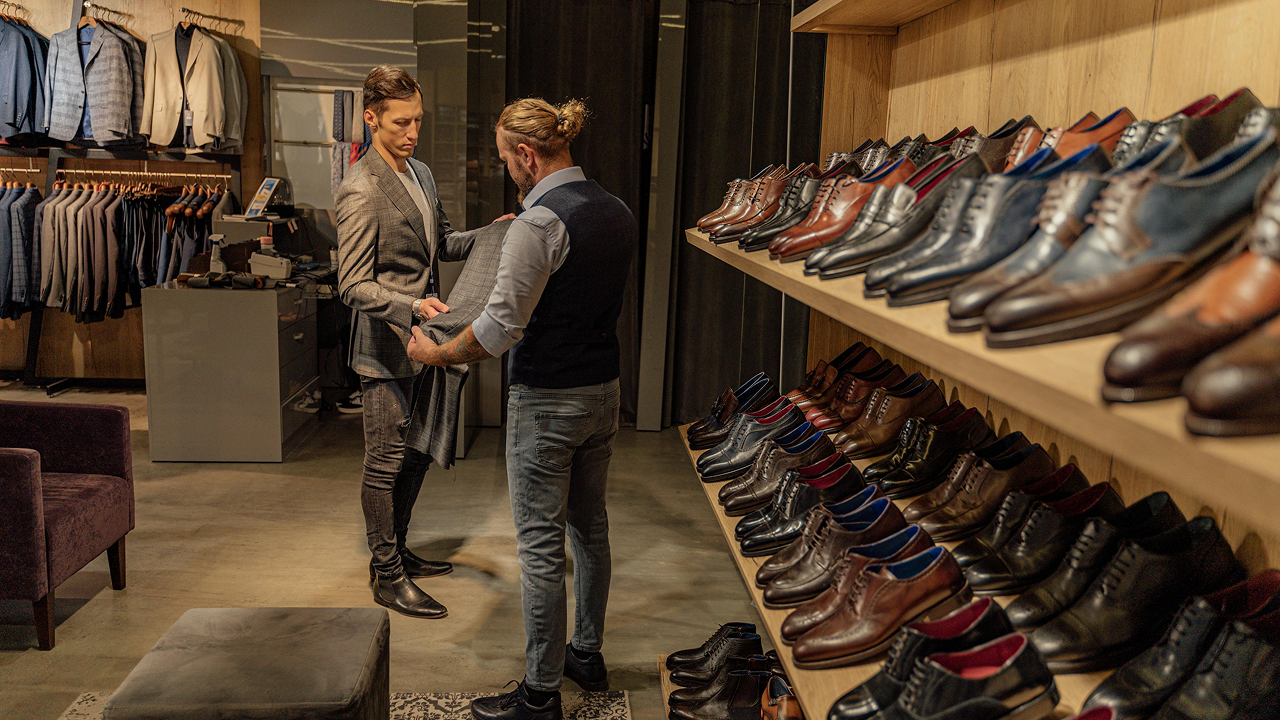
By Pamela Thompson April 22, 2025
The footwear industry is fast-paced and customer-driven. With constant shifts in styles, seasonal trends, and growing e-commerce demand, shoe retailers must stay agile to thrive. But as businesses adapt to changing customer expectations, one critical area often lags behind—payment processing.
From checkout delays to fraud risks, payment systems can create friction that affects both sales and operations. Whether you’re managing a local shoe boutique or a national chain, understanding and overcoming payment challenges is essential.
The Importance of Smooth Payment Experiences
Payments are more than just a transaction. They mark the final step in the customer journey and can shape how a shopper feels about the brand. A payment that’s fast, secure, and convenient adds to customer satisfaction. A clunky or confusing process, on the other hand, can lead to lost sales, poor reviews, and missed opportunities.
Footwear retailers must provide seamless payment experiences across all platforms—in-store, online, and even on mobile devices. But achieving that consistency isn’t always simple. Let’s dive into the specific challenges and explore effective solutions.
Challenge 1: Checkout Delays at Physical Stores
In a brick-and-mortar shoe store, customers often spend time browsing, trying on shoes, and comparing options. But even a positive shopping experience can be soured by a slow or inefficient checkout process. Long lines, outdated terminals, or card-reading errors can quickly frustrate shoppers.
Why This Happens
Many footwear retailers rely on legacy point-of-sale (POS) systems that can’t keep up with modern payment methods. These older systems may not support contactless payments, digital wallets, or EMV chip cards efficiently. They may also struggle during peak hours when customer volume is high.
The Solution
Upgrading to a modern, cloud-based POS system is a game-changer. These systems process transactions faster, support multiple payment types, and reduce queue times. Mobile POS solutions can also allow staff to complete sales anywhere on the sales floor, eliminating bottlenecks at the register.
Investing in newer payment terminals that support tap-to-pay and digital wallets not only speeds up the process but also aligns with customer expectations in today’s cashless environment.
Challenge 2: Payment Failures and Declines
One of the most frustrating experiences for customers is when a valid card is declined for no clear reason. This not only leads to abandoned sales but can also embarrass or frustrate the buyer. For retailers, failed payments mean lost revenue and wasted staff time.
Why This Happens
Payment failures can occur for a variety of reasons—network errors, card reader malfunctions, outdated firmware, or even incorrectly configured payment gateways. If your processor has frequent outages or delays, these issues become even more common.
The Solution
First, ensure that your hardware and software are regularly updated. Payment systems need consistent maintenance to avoid errors. Partner with a payment processor that offers high uptime reliability and responsive technical support.
Implementing redundancy—such as having a backup card reader or alternate checkout option—ensures that you’re prepared when technology doesn’t cooperate.
Challenge 3: Complex Refunds and Exchanges
Footwear retail involves a high number of returns and size exchanges. Customers often buy multiple sizes to try at home or return shoes due to fit or style preferences. Managing these returns can get complicated, especially when different payment methods or locations are involved.
Why This Happens
Many retailers use payment systems that are not integrated across channels. If a customer buys shoes online but wants to return them in-store, the systems may not talk to each other. Manual reconciliation and refund approval can delay the process and confuse staff.
The Solution
To solve this, retailers need an omnichannel payment solution. These systems sync online and in-store sales into a unified database, making it easier to track transactions, process refunds, and update inventory. A good system should let customers return or exchange items through any channel with minimal friction.
Also, choose a payment provider that allows easy refund issuance to the original payment method. Speed and simplicity improve the customer experience and reduce strain on your staff.
Challenge 4: Limited Payment Options
Customers today want flexibility. Some prefer using credit or debit cards, while others prefer mobile wallets, Buy Now Pay Later (BNPL) services, or even contactless tap-to-pay. Failing to offer preferred payment methods can result in lost sales, especially among younger or tech-savvy shoppers.
Why This Happens
Many small to mid-sized footwear retailers focus on traditional payment options and neglect to update systems to support newer technologies. The cost or complexity of implementation may also be perceived as a barrier.
The Solution
Start by understanding your customers’ preferences. Do a quick survey or monitor what types of payments they use most. Then, partner with a payment provider that supports a wide variety of payment options, including digital wallets like Apple Pay and Google Pay, as well as BNPL services such as Klarna or Afterpay.
Offering multiple payment choices doesn’t just meet current needs—it also future-proofs your checkout process.
Challenge 5: E-Commerce Integration Gaps
Selling footwear online is now essential, but poor integration between your payment processor and e-commerce platform can create headaches. Whether it’s delayed payment confirmations, incorrect order statuses, or payment-related disputes, these issues can harm your brand reputation.
Why This Happens
Retailers may use a payment gateway that doesn’t fully integrate with their e-commerce system, especially if the website and payment platform were set up separately. Lack of integration means more manual entry, slower processing, and increased room for error.
The Solution
Select a payment processor that offers plug-and-play integration with your e-commerce platform, such as Shopify, WooCommerce, or BigCommerce. This allows real-time order tracking, instant payment confirmation, and automatic inventory updates.
Having your in-store and online systems communicate effectively also enables a more streamlined omnichannel shopping experience, including services like buy online, pick up in-store (BOPIS).
Challenge 6: Chargebacks and Fraud
Chargebacks are a growing concern, especially for online footwear retailers. Fraudulent purchases, shipping disputes, and buyer’s remorse can all result in chargebacks. When they pile up, they can affect your cash flow and merchant standing.
Why This Happens
Online shoe sales are susceptible to “wardrobing” fraud, where customers buy items, wear them briefly, and return them under the guise of dissatisfaction. Others may claim an item was never delivered. If your payment processor lacks fraud protection tools, these issues become more frequent.
The Solution
Invest in a payment provider with strong fraud prevention features such as address verification (AVS), card security code checks (CVV), and risk analysis tools. For high-value items, consider requiring a signature on delivery or using tracking systems that confirm delivery status.
Clear return policies, detailed product descriptions, and secure checkout pages also reduce the likelihood of chargebacks.
Challenge 7: Inconsistent Reporting and Analytics
Knowing what’s selling, how customers are paying, and when your busiest times occur is essential for business success. But many footwear retailers lack robust reporting tools in their payment systems, leading to missed insights and guesswork.
Why This Happens
Legacy systems or basic POS solutions often lack advanced analytics. When sales data is scattered across platforms—or not tracked in real time—it becomes difficult to make informed decisions.
The Solution
Look for a payment solution that includes real-time reporting dashboards, customizable sales reports, and data export options. When integrated with your inventory and CRM systems, analytics can reveal purchasing trends, seasonal fluctuations, and the most popular payment methods.
Better insights allow for smarter marketing, more accurate staffing, and improved stock planning.
Challenge 8: Scalability and Multi-Location Management

As footwear retailers expand—whether through pop-up stores, franchise locations, or international shipping—managing payments across multiple sites becomes increasingly complex.
Why This Happens
Many small-scale systems aren’t built to support multiple locations or currencies. Each store may operate in a silo, using different terminals, platforms, or even providers. This lack of cohesion complicates reporting, accounting, and reconciliation.
The Solution
Choose a payment platform with centralized control over multiple locations. Cloud-based POS systems allow you to manage inventory, staff, and sales across all locations from a single dashboard. Make sure your payment provider supports currency conversion and international processing if needed.
Scalable systems reduce setup time when opening new stores and help maintain consistency across all customer touchpoints.
Challenge 9: Rising Payment Processing Costs
Transaction fees, monthly charges, and unexpected penalties can eat into profit margins. In a high-volume industry like footwear, even a small fee difference can have a big impact over time.
Why This Happens
Retailers may not be aware of their full cost structure, or they may be locked into outdated contracts. Hidden fees, tiered pricing models, or minimum monthly charges can catch businesses off guard.
The Solution
Regularly review your payment processor’s fee breakdown. Consider switching to a provider that offers flat-rate or interchange-plus pricing for more transparency. Some providers also offer lower fees for debit cards or high-volume discounts, which can be negotiated.
By understanding the true cost of your transactions, you can choose a provider that aligns with your business model.
Challenge 10: Lack of Customer Personalization

The final payment step is also an opportunity to build loyalty. However, many footwear retailers miss the chance to personalize the experience with loyalty program links, post-purchase thank-you messages, or special offers.
Why This Happens
Basic POS and payment systems focus solely on transactions. Without CRM integration or custom checkout tools, businesses lose opportunities to engage customers at a key moment.
The Solution
Integrate your payment system with customer loyalty software. This enables features like automatic point accumulation, personalized promotions, and email receipts with tailored recommendations.
Even a simple thank-you message after a completed transaction can create a more memorable and positive experience.
Conclusion
Footwear retailers face a variety of payment-related challenges—from checkout delays and fraud risks to integration issues and rising costs. But with the right payment infrastructure, these obstacles can be turned into opportunities.
Modern, omnichannel payment solutions help retailers reduce friction, improve customer satisfaction, and streamline operations. By addressing each challenge proactively, you can create a checkout experience that’s not only functional but also reinforces your brand’s professionalism and customer focus.
Leave a Reply